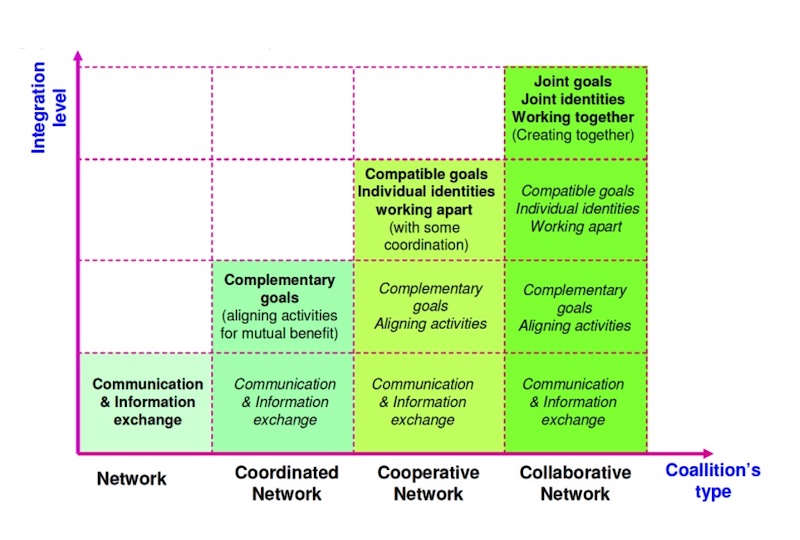
Today many types of businesses on a global level are experiencing a significant evolution, which is the transition from supply chains to collaborative networks.
The change underway, involving to a great degree those companies with international involvement which necessarily need to connect with world markets, is due to the fact that they have realised they can no longer compete, on a global level, as autonomous and self-sufficient single entities, but they must act as links in a longer chain, orput more precisely, a supply chain.
Let’s take a deeper look.
How do we define this supply chain?
Basically, the term represents a process, or better-said, a sequence of processes, both decisional and executional. These processes are entwined with flows of materials, information and money, where the goal is to satisfy the demands of the end customer.
This chain does not take into account, therefore, just the two far ends of the business relationship, with the producers on one side andthe suppliers on the other, but all the intermediate steps as well. These steps include transporters, warehouses, dealers, new product development, marketing, distribution, financial aspects, customer care and even the consumers themselves.
The limits of the supply chain
The supply chain, as capable as it is of dealing with transformed world markets’ requirements compared to the previously cyclical cadence, is marred by a series of limitations.
In fact, a long chain made up by multiple hubs is subject to an increased risk of bottlenecks, glitches and supply problems which in turn mean production difficulties, and thus difficulties in satisfying the end customers’ demands.
Just a single delay in deliveries could create huge problems.
In the event of entirely unexpected occurrences, such as the current pandemic, the closure of borders between countries, even if only temporary, can devastate the entire chain.
And so, collaborative networks come into the game. Let’s dig deeper.
What are collaborative networks?
It is widely recognized that today’s global markets require a completely different approach compared to the past, based on the construction of a chain made up of links representative of the various phases of development, production, transport, distribution, sales and product aftercare.
We have also noted how the existence of all these links, each independent of the other and not connected by exclusive relationships, can generate bottlenecks, partly due to delays or accidental issues, and partly due to inefficient management.
To overcome these limits, it is commonly believed that it is necessary to create collaborative networks, where the two key words demonstrate not only the need to collaborate and work synergically, but also the existence of a group, a network of hubs ready to ensure collaborative operations.
What does this mean? Collaboration is not simply doing things together, it also means working to solve problems despite who caused them, to build a trusting relationship between parties, which goes beyond the interests of each single link in the chain.
For example, a team of engineers collaborating with a marketing department in order to develop a product which better satisfies clients’ demands, bears in mind data incoming from logistics and suppliers of raw materials.
This setup, described in the paper “Collaborative Networks: Value creation in a knowledge society”, very clearly shows how collaborative networks function.

Conclusions
The transition from supply chain to collaborative networks presumes team work, in which each link in the chain determines to share goals, identities, information and knowledge.
Let’s remember too that in a global context, the components of this network are for the most part autonomous, geographically spread out and diverse regards their operating environment, culture, authorised company capital and objectives, but they decide to work together to reach common goals.
The organisational and decisional processes can vary according to differing contexts, but the basic principle remains: only by collaboration can we survive and prosper in an increasingly complex, and occasionally hard to deal with, world market.



